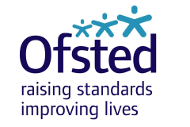Risk assessment methodology: early career framework and national professional qualifications
Updated 9 October 2024
Applies to England
Introduction
We use risk assessment methodology to ensure that our approach to inspection is proportionate and that we focus our efforts where they can have the greatest impact. We apply the methodology described here for all early career framework (ECF) and national professional qualification (NPQ) full inspections. Initial lead provider monitoring visits (LPMVs) must take place for new lead providers within the first 12 months of course delivery.
From the second year of delivery onwards, lead providers will usually receive a full inspection a minimum of once every two academic years. This is likely to consist of a separate inspection for each contract, that is, a separate inspection of ECF and/or NPQ provision. However, we reserve the right to carry out a parallel inspection of the ECF and NPQ provision at the same time. If an existing lead provider begins delivering one or more additional NPQ programme(s), we will usually include the additional programme(s) in the lead provider’s next scheduled full inspection.
If an LPMV finds that a lead provider is not taking effective action to ensure that delivery of the ECF and/or NPQ programmes is of a high quality, we will normally return to do a full inspection within a year.
Further information on when an inspection is likely to take place is set out in the ECF and NPQ inspection framework and handbook. It is important to note that the risk assessment process is not used to prejudge inspection outcomes.
The risk assessment process
Risk assessment to determine the timing of ECF and NPQ inspections involves analysing 5 key risk factors, then considering additional information on risk. Members of the teacher development policy team review the information to plan the sequence of ECF and NPQ inspections.
Analysing eligible lead providers
The initial dataset used for risk assessment contains all lead providers contracted by the Department for Education that are open and offering publicly funded ECF induction and/or NPQ professional development.
The risk assessment is based mainly on the following factors:
-
the time since the previous inspection
-
information from the lead provider’s LPMV and previous full inspection outcomes
-
known concerns about a lead provider, where applicable
-
known complaints about a lead provider, where applicable
-
the timing of other inspections relevant to the lead provider, for example inspection of initial teacher education provision or further education and skills
We allocate a risk score to each lead provider based on the 5 factors set out above.
Additional risk information
We include the following additional information in the risk assessment process and take account of it in making decisions:
-
information from the DfE (for example, the lead provider’s course arrangements, the number of participants on the programmes and the views of participants on the programmes)
-
intelligence about a provider, such as changes to the leadership or structure

